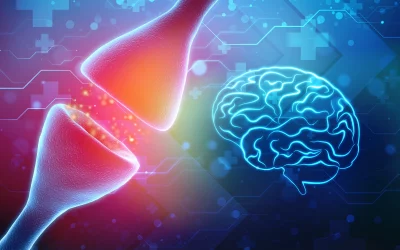Different Types of TBIs to Recognize
Traumatic Brain Injuries (shorthand called TBIs), occur when a person is struck or jolted in the head, causing the brain’s normal function. Although TBIs may render a person unconscious, this is not always the case.
Some TBIs are minor at first, with no obvious symptoms, while others are so severe that there is no doubt about the severity of the injury. In any instance, knowing what form of TBI a person has, or even whether they have brain damage at all, is crucial to going ahead with a personal injury case.
Mild, moderate, severe, or penetrating traumatic brain damage are the four types of traumatic brain injury. However, regardless of where the damage falls on this spectrum, all brain injuries are significant. The four forms of TBIs listed below include all four severity levels.
Free Consultation
In Person | Phone | Zoom
Concussion or mild traumatic brain injury
A concussion happens when a person is struck in the head, and their brain processes differently than usual. Concussions are commonly referred to as “mild” brain injuries, although this is a misnomer since any damage to the brain is dangerous.
A concussion may occur due to a car accident, a sports injury, a slip and fall, or any other major head impact. Most individuals who have a concussion or mild TBI will recover in a few months, but some may experience more significant long-term consequences.
Because of the possibility of a second brain injury, concussions, or mild TBIs, are critical to identifying. Second Impact Syndrome is a syndrome that may transform a minor head injury into a significant medical problem.
Injuries to the brain that penetrate the skull
“Closed” trauma occurs when a person experiences a blow or jolt to the head. On the other hand, a penetrating injury occurs when a foreign item pierces the skull and injures the brain.
A penetrating brain injury may be caused by a high-velocity projectile, such as a bullet or a piece of shrapnel from a car accident, or a low-velocity object, such as when a person’s head collides with a sharp object. Both types of penetrating TBI are quite dangerous.
The symptoms of a penetrating brain injury vary depending on the source and severity of the injury, but direct brain damage nearly always has long-term consequences. These may range from more urgent medical concerns, such as severe brain hemorrhage, to longer-term repercussions, such as epilepsy or paralysis.
Understanding how a penetrating head injury will impact a patient in the months and years ahead is critical to successfully prosecuting a penetrating TBI case.
Cerebral Contusion
When there is bleeding on the brain’s surface, a cerebral contusion, commonly known as “brain bruising,” develops. When the brain collides with an item, it may also collide with the opposite side of the skull, resulting in a cerebral contusion. Depending on which side of the brain is injured, these injuries are called coup or contrecoup injuries.
Understanding how a hit changes the brain to the head is crucial to determining the long-term consequences of an injury.
Intracranial Hemorrhage is the fourth kind of Intracranial Hemorrhage
Blood vessels within the brain frequently break after head trauma, resulting in intracranial hemorrhaging or brain hemorrhage. This kind of brain bleeding often results in a hazardous build-up of pressure within the skull, resulting in more catastrophic brain damage, sometimes with long-term implications. TBIs of this kind need prompt medical treatment and might result in significant repercussions such as a stroke or long-term damage.
Information Supplementary
Traumatic brain injuries (TBI) are the most prevalent kind of brain injury, impacting up to 1.7 million individuals each year and claiming the lives of 52,000 people. In this word, the physical trauma of a hit to the head is referred to; however, not all strikes to the head cause the same amount of damage. Some TBIs are slight, resulting in only temporary symptoms. Others cause severe brain damage that may impair a survivor’s capacity to operate indefinitely.
It is difficult to identify a TBI only based on symptoms or the intensity of the hit, no matter how severe the damage seems to be. If you or someone you know has been hit in the head, get medical help right once. This might save your life and help you avoid many of the long-term consequences of a brain injury.
It’s worth noting that traumatic brain injuries aren’t the only way the brain may be damaged. Traumatic and non-traumatic brain injuries may both be catastrophic. See “Types of Acquired Brain Injuries” for additional information on non-traumatic brain injuries.
The following are examples of common traumatic brain injuries
Brain Injury with Coup-Contrecoup
When there is a large hit to the brain, the brain or skull slams onto the opposite side of the impact site, resulting in coup-contrecoup brain damage. Consequently, damage occurs both at the hit site and on the opposite side of the brain. Though any accident may result in coup-contrecoup brain damage, these events are often very severe, resulting in acute symptoms. Serious car accidents, head traumas, hard falls, and acts of aggression are all known to cause these types of injuries.
Because coup-contrecoup brain injuries need a lot of force, the symptoms are often severe, and survivors may require lengthy care to recover. On the other hand, the prognosis is determined by the impact site, the intensity of the blow, general brain health, age, and other personal considerations.
Concussion
The most frequent kind of brain injury is a concussion, also known as a mild traumatic brain injury (mTBI), accounting for hundreds of thousands of emergency department visits each year. A concussion occurs when your brain is jolted by a violent hit to the head, causing your brain to accelerate in the direction of the impact. A concussion, in other words, causes your brain to quake.
Concussions may vary in severity from minor to severe. Most physicians thought concussions were little more than annoyances a generation ago. We now know that a concussion may have long-term consequences. Concussion-related disorders may develop in people who have had numerous concussions.
Chronic traumatic encephalopathy may occur in people who have had several concussions. This kind of brain trauma, particularly frequent among professional football players, may permanently alter mood, behavior, and brain function.
Brain Injuries
A contusion is merely a bruise, which is a modest kind of skin bleeding. Brain contusions are comparable to concussions and often occur together. If the bleeding from a brain contusion does not cease on its own, the discoloration may need to be surgically removed. The magnitude of the bleed, the length of time it lasts, the consequences of surgery, and the location of the injury all influence the level of damage caused by a brain contusion.
Diffuse Axonal Injury (DAI) is a kind of axonal injury.
A diffuse axonal injury (DAI) is similar to a concussion in that the brain’s movement causes it, but it is considerably more devastating. When a person has a DAI, the head moves so quickly that the brain stem can’t keep up, producing rips in the brain’s connections. These rips may be minuscule, causing different levels of brain injury. They may be fairly huge as well. Tears that are big enough may be lethal.
The degree of symptoms from this sort of injury is mostly determined by the brain areas impacted, the severity of the tears, and if any other injuries were experienced as well, such as a contusion or concussion.
Second Impact Syndrome
A second brain injury after a first may cause more severe damage, much as a reopened scab takes longer to heal and may leave a scar. The consequence of second impact syndrome, also known as repeated traumatic brain injury, is dependent on the location of the damage, the severity of the initial injury, and the degree of stress received.
Even if the person does not lose consciousness, a second collision is more likely to produce significant brain injury than a first. Even if you feel OK, get medical attention if you receive a hit to the head in the months after brain damage.
Shaken Baby Syndrome
Diffuse axonal damage is comparable to shaken infant syndrome, but it has a broader impact. It is now considered a form of illegal child abuse in most locations, and it generally stems from parents’ anger with their children’s constant wailing.
Broken blood arteries and brain hemorrhages, strokes, and rips in the brain and brain stem are common in shaken newborns. Shaken newborns often die. Almost often, the consequences are disastrous and long-lasting.
The injury that penetrates the skin
When an item enters the skull and brain, it is called a penetrating injury. Because these injuries often produce serious bleeding, blood clots, disturbed oxygen flow to different brain areas, and other rapid adverse effects, they may be deadly if not treated swiftly.
Never remove an item that has pierced the skull since it may aggravate the bleeding or cause more injury to the brain. The advantages of removal and surgery must be weighed against the dangers you and your doctor must decide. Small items, such as bullets or pellets, are often left in situ by physicians. Bullets are the most common cause of penetrating brain injuries, killing 91% of injured.
When an item enters the brain and departs at a different site, it is called a through-and-through injury. These penetrative wounds often result in numerous injuries as well as catastrophic Hemorrhage. Furthermore, some things ricochet within the skull before leaving, causing much more serious injury.
Survivors with penetrating injuries may need many brain operations, heavy doses of antibiotics, and various therapy to regain function. Finally, the severity of the damage, its location, a brain bleed, and other variables influence the degree of impairment and prognosis.
CALL a TBI lawyer who has handled cases similar to yours
To effectively attempt a brain injury case, you or a loved one must first understand what sort of TBI you or a loved one received and how that form of TBI may bring issues in the future.
The experienced lawyers Warrior Car Accident Lawyers, are well-versed in the complexities and subtleties of traumatic brain injury litigation. Allow our team of seasoned detectives, expert witnesses, and lawyers to obtain the compensation you deserve in your head injury case. Call 719-300-1100 or use this online form to get in touch with us right now.












